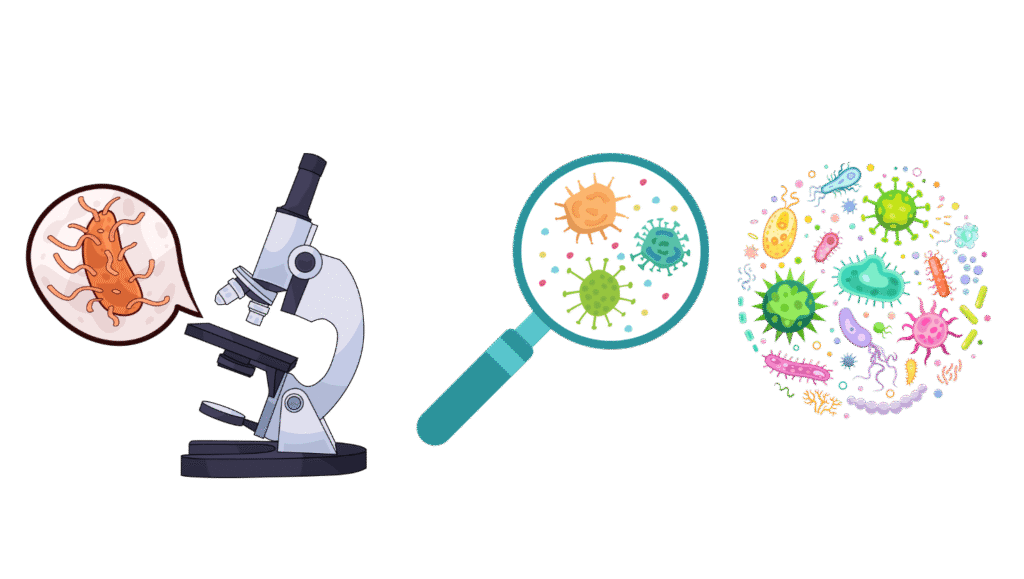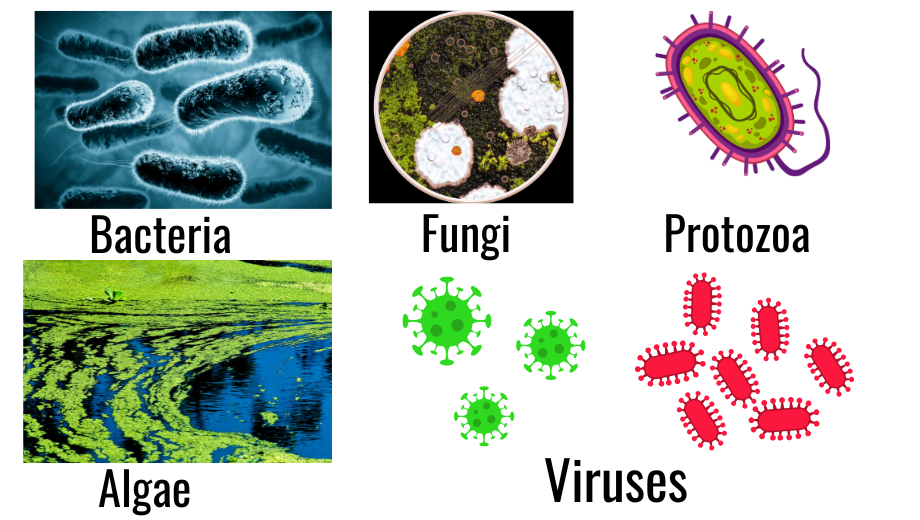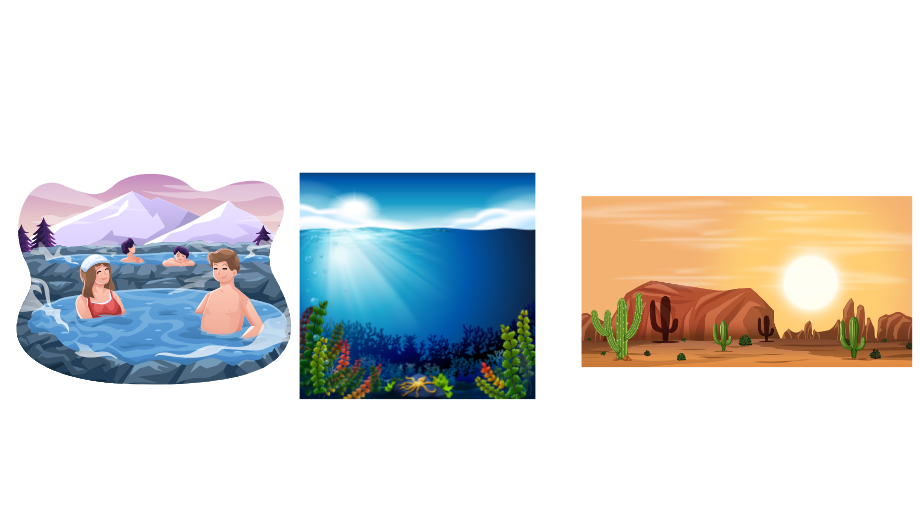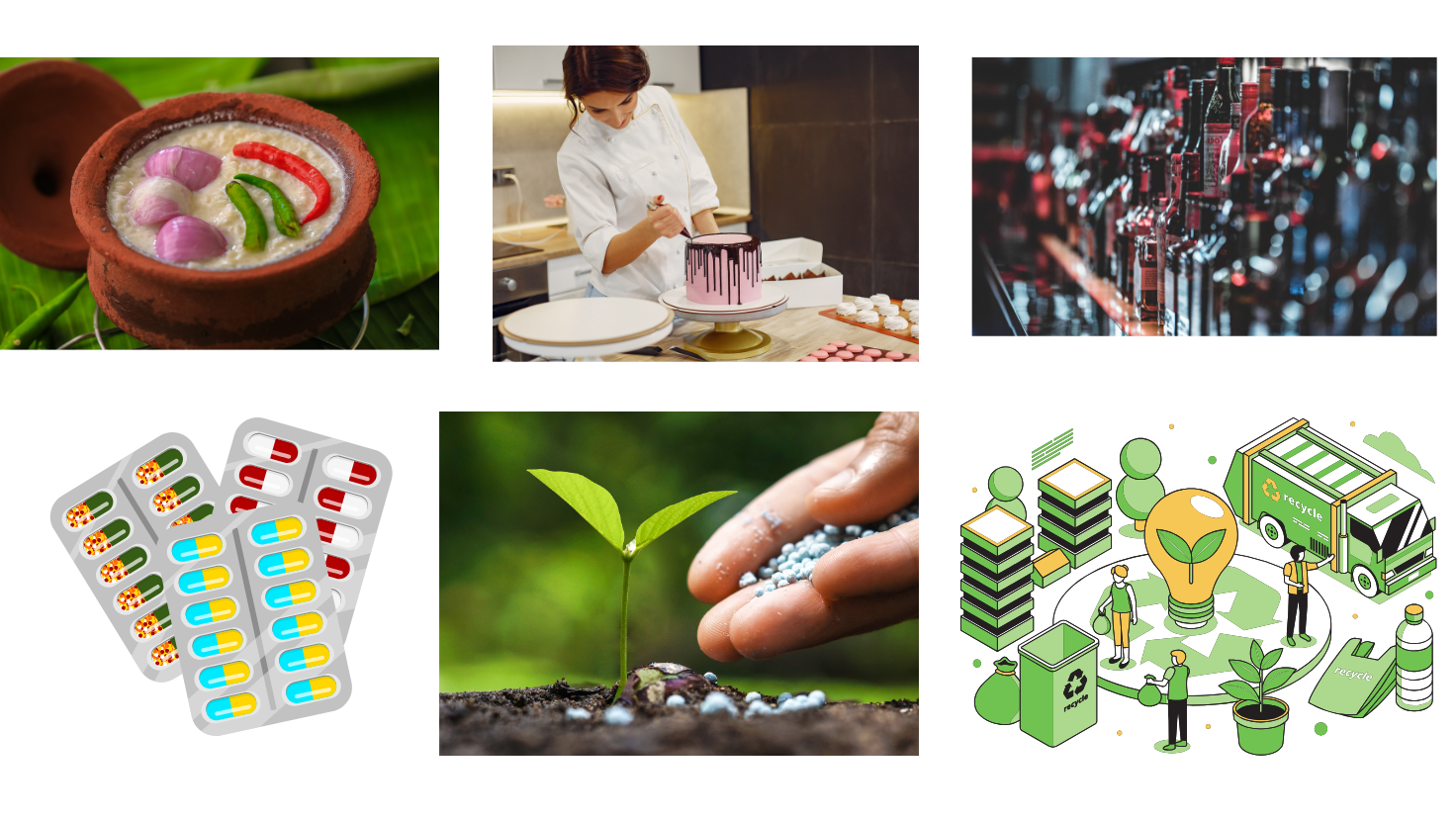Microorganisms And Us
micro organisms by Delta publications
key notes :
✅ What are Microorganisms?
- Microorganisms (or microbes) are tiny living organisms that are too small to be seen with the naked eye.
- They can be seen only under a microscope.

🔬 Types of Microorganisms

- Bacteria – Single-celled organisms, found everywhere.
- Fungi – Includes molds and yeasts.
- Protozoa – Single-celled, animal-like organisms (e.g., amoeba).
- Algae – Simple, plant-like organisms that live in water.
- Viruses – Smaller than bacteria; can reproduce only inside living cells.
💡 Where are Microorganisms Found?

- In air, water, soil, and inside and outside of our bodies.
- Can live in extreme conditions like hot springs, icy regions, deserts, and deep oceans.

😊 Useful Microorganisms

- In Food Industry:
- Lactobacillus helps in making curd.
- Yeast is used in baking (makes dough rise).
- Fermentation by yeast helps in alcohol production.
- In Medicine:
- Some bacteria produce antibiotics (e.g., Penicillium makes penicillin).
- In Agriculture:
- Rhizobium bacteria fix nitrogen in the soil to help plants grow.
- Microbes help in composting (decomposing organic waste).
- In Cleaning Environment:
- Decompose dead plants and animals into simpler substances.
😷 Harmful Microorganisms
- Cause Diseases in humans, animals, and plants:
- Human diseases: Tuberculosis, Typhoid, Cholera, COVID-19
- Plant diseases: Rust in wheat, Citrus canker
- Food Spoilage:
- Microbes can spoil food by growing on it and making it unsafe to eat.
🧴 Preservation of Food
- To prevent microbial growth, food can be:
- Refrigerated or frozen
- Dried
- Salted or pickled
- Packed in air-tight containers
- Preserved with chemicals (e.g., sodium benzoate)
💉 Vaccination
- Vaccines are weakened or dead microbes that help our body build immunity against diseases.
- Examples: Polio vaccine, COVID-19 vaccine, Measles vaccine
🧫 Nitrogen Cycle
- Microorganisms play a vital role in the nitrogen cycle, converting atmospheric nitrogen into forms usable by plants.
📌 Summary
- Microorganisms can be both helpful and harmful.
- They play important roles in food production, healthcare, agriculture, and environmental balance.
- Good hygiene, food preservation, and vaccination help protect us from harmful microbes.
Let’s practice!

